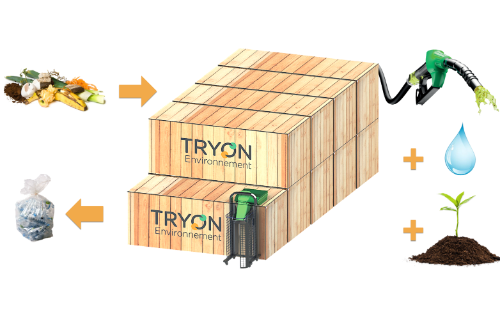Circular economy
How to shape a sustainable future?
Discover more about the importance of developing a circular economy, potential solutions to achieve it and how you can contribute.

The circular economy aims to change the paradigm in relation to the linear economy, by limiting the environmental impact and waste of resources, as well as increasing efficiency at all stages of the product economy.
The recent warnings about waste pollution and the limits of natural resources are encouraging the development of a circular economy.
What is the definition of circular economy, what are its benefits and the solutions to achieve it?
01. Solutions
Circular economy solutions
The Solar Impulse Label is granted to innovative circular economy solutions that meet high standards of sustainability and profitability.
Each solution goes through a strict assessment process performed by independent experts.

02. Definition
What is the circular economy?
The circular economy refers to an economic model whose objective is to produce goods and services in a sustainable way, by limiting the consumption and waste of resources (raw materials, water, energy) as well as the production of waste.
It is breaking with the model of the linear economy, based on a take-make-consume-throw away pattern, by proposing to transform waste into recycled raw material for product design or other uses.
The circular economy model fits directly into the more general framework of sustainable development. It is part of a global strategy that also uses, among other things, the principles of the green economy, industrial ecology, eco-design or the economy of functionality.

03. Principles
Circular economy principles
The circular economy encompasses a very large number of sectors of activity and can be broken down into 7 complementary patterns of production and consumption which, when combined, make sense and reinforce each other:
- 1. Sustainable procurement: development and implementation of a responsible purchasing policy
- 2. Ecodesign: process of reducing the environmental impacts of a product or service throughout its life cycle
- 3. Industrial and territorial ecology: search for eco-industrial synergies at the scale of a business area - the waste of one company can become the resources of another one
- 4. Economics of functionality: collaborative economy that favors use over possession and thus tends to sell services related to products rather than the products themselves
- 5. Responsible consumption: rational consumption and choice of products according to social and ecological criteria
- 6. Extending the duration of use: through repair, reuse and repurpose
- 7. Recycling: treatment and recovery of the materials contained in collected waste
04. Benefits
Circular economy benefits
The main goals and advantages of a circular economy are:

Environmental
The first advantage of a circular economy is the protection of the environment, reducing waste and the emissions of greenhouse gases, systematizing recycling, and ending planned obsolescence. The circular economy also allows to decrease the dependence on importation of resources (raw materials, water, energy).

Economic
Another huge benefit of the circular economy is that it stimulates innovation and boost economic growth, and could in the long run enhance the competitiveness of national companies.

Social
In addition, the circular economy creates jobs and enables people to save money, cutting unemployment and poverty as well as reducing the social impacts of pollution and climate change.

05. Challenges
Circular economy challenges

1. Institutional
Rules and regulations need to be adapted to encourage and promote the development of the circular economy, both nationally and internationally. In fact, strengthening local governmental policies to support its implementation, as well as bringing clear legislation are key to promote the transition towards circular economy business models.

2. Economic
Business transformation is costly. Therefore, financial incentives are essential to achieve circular economy. Lowering VAT on recycled products and increasing tax on virgin raw materials are examples of solutions that could be adopted to accelerate the uptake of circular economy initiatives.

A challenge, #1000 Solutionsto change the world

A label focused on both the environment and profitability.
For the first time a label proves the economic profitability of solutions that protect the environment. The Solar Impulse Foundation is selecting 1,000 solutions that protect the environment in a profitable way and awarding them the Solar Impulse Efficient Solutions Label.
Collaborating with independent experts and with renowned institutions, the World Alliance proposes to evaluate its members solutions free of charge. The Solar Impulse Efficient Solutions label will offer a competitive edge to innovators and a guarantee of quality to solution seekers.

A label focused on both the environment and profitability.
































